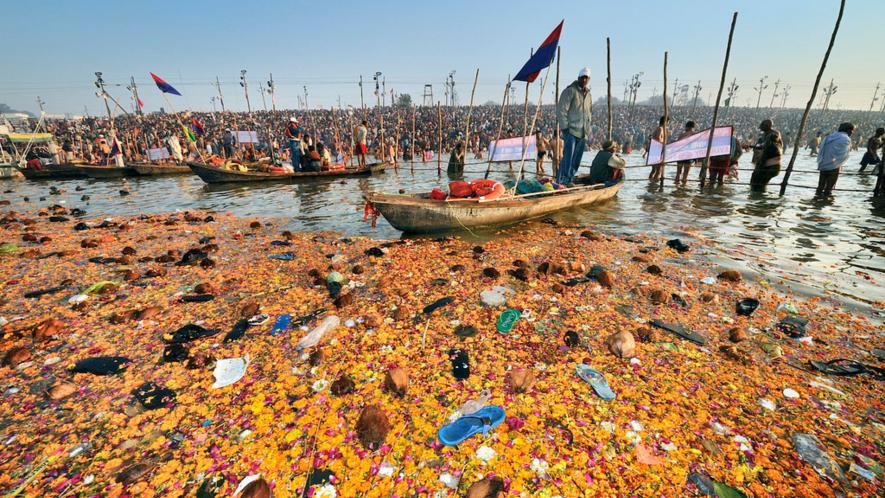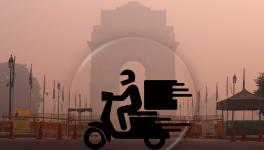Bengal: Governance Issues Plague Namami Gange as Polluted Water Flows Through the River

Image Courtesy: Flickr
Kolkata: The 'Namami Gange Programme,' an Integrated Conservation Mission designated as the 'Flagship Programme' by the Union Government in June 2014 with a budget outlay of Rs. 22,000 crore, aims to achieve the twin objectives of effective pollution abatement and the conservation and rejuvenation of the River Ganga.
However, the programme appears promising only on paper, as the navigability and flow of the Ganges are steadily deteriorating, causing concern along the river basins due to elevated levels of coliform bacteria beyond prescribed limits. The water is unfit for drinking and bathing, especially in West Bengal, where pollution levels are the highest among all states through which it flows.
A study conducted by the West Bengal Pollution Control Board reveals that from Baharampur to Diamond Harbour, the river water is unsuitable for bathing, and drinking the water of the river is out of the question. Coliform bacteria levels are alarming, with Baharampur recording 17,000.0 MPN/100ml, Dakhineswar at 120,000 MPN/100ml, and Diamond Harbour at 7,800.0 MPN/100ml, far exceeding the permissible limit of 50 MPN/100ml.
The primary concern is that despite the implementation of Sewage Treatment Plants (STPs) under the Namami Gange project, many are non-functional due to corruption and misuse of allocated resources.
Himanshu Thakkar of SANDRP (South Asia Network on Dams, Rivers and People), an NGO, told NewsClick that governance issues plague River Ganga management. The government's focus on finance, infrastructure, and technology is inconsistent and often worsens the river's condition.
Thakkar pointed out that various projects, such as the navigational route in the Ganges and the tent city in Varanasi, were detrimental to the river's well-being. River link projects, inconsistent measures, and non-functional STPs contribute to the failure to achieve the project's objectives.
To address governance issues, Thakkar suggested transparency, accountability, and participatory management. “Information about STPs should be publicly available, and STP management committees should include 50% external government nominees. We need more nature-friendly STPs, and water treated should be recycled, and there should be decentralised STPs along with environmental impact assessments, democratic decision-making processes, and annual reports for every Ganga tributary,” he said.
Environmental activist ‘Rajendra Singh, a Ramon Magsaysay award winner and known as the ‘Water Man’, expressed frustration with the Namami Gange project. Speaking with NewsClick, he criticised the involvement of contractors from Gujarat, the Prime Minister's home state, and highlighted the lack of cleanliness promised by the project. Singh claimed that funds were being wasted, pollution levels were increasing, and corrupt practices were rampant in the programme.
“The pollution levels in the Ganges are increasing. The construction of all-weather roads in the Himalayas has worsened the issue, leading to siltation. Additionally, most STPs are in a state of closure. While log entries suggest operational status, on-site inspections reveal that the STPs are not functioning. Contractors managing these facilities are implicated in corrupt practices. Moreover, government officials provide inaccurate data, attempting to portray a misleading picture of the situation,” he said.
NewsClick's visit to Howrah uncovered factories, including a washing unit for used railway bedrolls, releasing untreated water into the Ganges. Because of the collusion with local Urban Local Bodies (ULBs), the authorities have not intervened. Several ULBs permit pollution-making units to discharge contaminated water into the Ganges, leading to dangerously high levels of coliform bacteria exceeding permissible limits in multiple locations, posing a threat to human health.
Get the latest reports & analysis with people's perspective on Protests, movements & deep analytical videos, discussions of the current affairs in your Telegram app. Subscribe to NewsClick's Telegram channel & get Real-Time updates on stories, as they get published on our website.
























